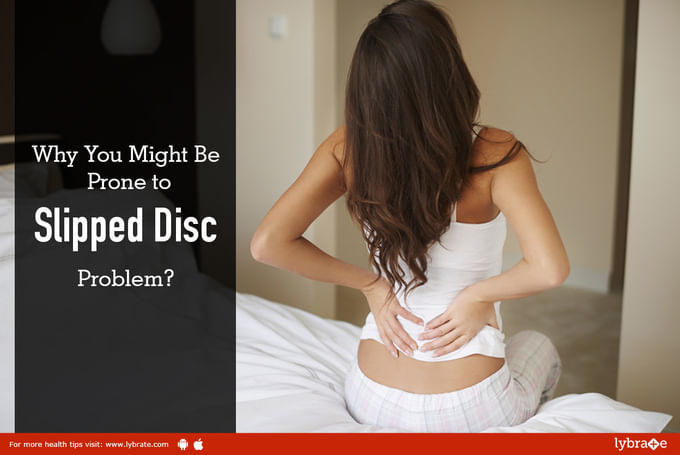Why You Can Get a Slipped Disc Problem?
Are you prone to slipped disc problem? + the ideal way to treat it
A slipped disc, also known as a prolapsed disc or herniated disc, is the term given to the phenomenon that occurs when a cartilaginous disc found between the vertebrae in the spine becomes slightly displaced or protrudes, thereby pressing on the nerves in the adjacent areas and causing back pain.
This happens when the soft inner part of the disc, known as nucleus pulposus, bulges out through a weakness in the exterior part of the disc. A prolapsed disc usually occurs in the lower region of the spine and can be of varying sizes. There might even be the development of inflammation around the disc in some cases.
Who is likely to get affected?
Most cases of herniated disc occur in patients between the ages of 30 and 50. The number of men affected is twice as many as the number of women.
Although the root cause of this problem is not yet known, there are a number of factors that may trigger it. These factors include working at a job that requires a lot of lifting, an occupation that involves remaining in a seated position for a long time, weight-bearing sports, obesity, smoking habits and increasing age.
Effective ways of treating the problem
The different methods that are commonly used to treat the problem are:
- Medications - There are many different kinds of medicines that are effective in providing relief. These include painkillers, muscles relaxants, anti-inflammatory pills, etc.
- Spinal injections - A number of spinal injections are used to treat slipped discs. The injection is done at the opening where the inflamed nerve roots are found and reduces pain, swelling and irritation in the area.
- Radiofrequency ablation - This procedure makes use of an electrical current produced by radio waves to reduced pain and sensitivity in the affected area.
- Ozone discectomy - As opposed to the surgical removal of the prolapsed disc, this new process makes use of an ozone-oxygen mixture that is injected into the spine to treat the problem. Many international studies have proved its superiority to traditional methods and surgeries.
Those affected by this problem are advised to keep exercising and continuing with their everyday activities as best as possible.
'Consult'.
Tip: What kind of treatment does your knee pain require?



+1.svg)
